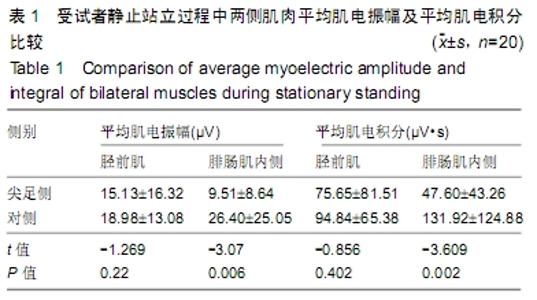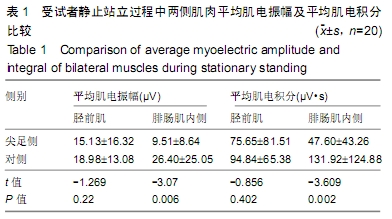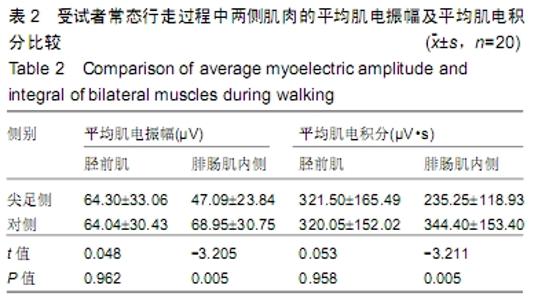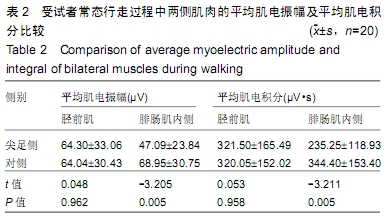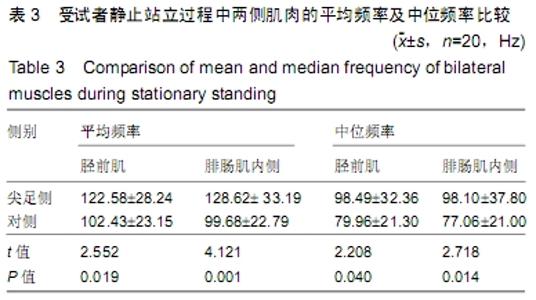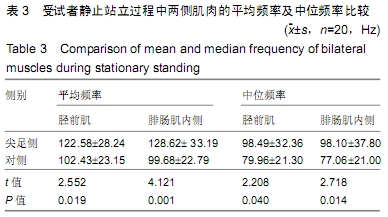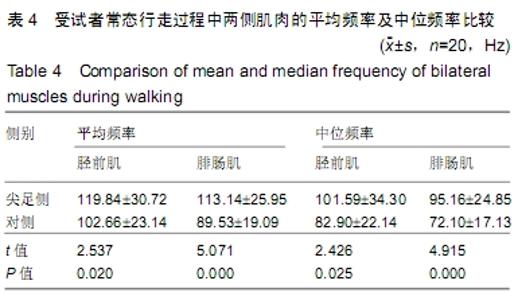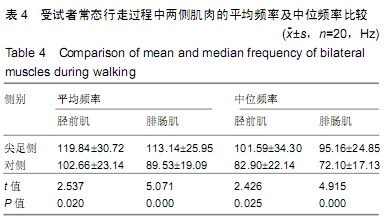[1]彭桂兰,张端秀,胡恕香,等.厦门市0~5岁儿童脑性瘫痪流行病学调查[J].中国妇幼保健, 2016,31(24):5456-5458.
[2]尹靖宇,徐涛,黄林,等.显微镜下改良胫神经肌支部分切断联合软组织松解治疗痉挛性脑瘫尖足步态的三维步态分析[J].甘肃医药, 2018,37(6):495-518.
[3]PAVAO SL, DOS SANTOS AN, WOOLLACOTT MH, et al. Assessment of postural control in children with cerebralpalsy:are view.Res Dev Disabil.2013;34(5):1367.
[4]孟文彬,刘锋伟,董婵,等.全身振动训练对1-3 岁痉挛型脑瘫患儿下肢运动功能的影响[J].郑州大学学报(医学版),2017,52(6):740-745.
[5]安子薇,吴庆文,赵雅宁,等.表面肌电图在帕金森病患者综合运动训练疗效评估中的应用[J].中华物理医学与康复杂志,2016,38(10): 740-743.
[6]中国康复医学会儿童康复专业委员会,中国残疾人康复协会小儿脑瘫康复专业委员会.小儿脑性瘫痪的定义、分型和诊断条件[J].中华物理医学与康复杂志,2014,29(5):309.
[7]张怡文,郭津.脑瘫儿童尖足的发生机制及治疗策略研究进展[J]. 齐齐哈尔医学院学报,2017,38(24):2928-2930.
[8]李诺,赵勇,刘振寰,等.“尖足三针”对痉挛型脑性瘫痪患儿尖足畸形的效果[J].中国康复理论与实践,2017,23(10):1185- 1189.
[9]张高飞,卢惠苹.表面肌电图在膝关节损伤中的应用现状[J].癫痫与神经电生理学杂志,2017,26(4):245-248.
[10]BRADLEY E, KANTZ H. Nonlinear time-series analysis revisited. Chaos.2015;25(9):097610.
[11]伍丹,张洲.踝足矫形器矫治小儿脑瘫尖足的疗效分析[J].按摩与康复医学,2017,8(16):41-42.
[12]罗梦,周国平,杨路,等.表面肌电图在脑卒中后运动功能障碍康复中的应用[J].中国康复,2017,32(1):67-70.
[13]冯宪煊,徐义明,蔡赟,等.非手术脊柱减压系统与常规牵引器治疗腰椎间盘突出症:表面肌电图分析的比较[J].中国组织工程研究, 2018,22(7); 1032-1037.
[14]廖志平,魏爽,李建华.表面肌电图评估技术在脑卒中患者下肢肌肉领域的应用[J].中国康复,2015,30(5):388-390.
[15]吴琼,张通,丛芳,等.健康成人水中平板步行运动分析[J].中国康复理论与实践, 2017, 23(1): 63-67.
[16]李亚娟,贾东奇,金伟,等.踝足矫形器对痉挛型脑瘫患儿胫前后肌群疲劳度影响研究[J].创伤与急危重病医学,2017,5(4):251-253.
[17]王利江,刘秋燕,于晓明,等.肌电生物反馈治疗痉挛型脑性瘫痪患儿尖足的效果[J].中国康复理论与实践,2016,22(10): 1209-1213.
[18]马轶杰,蔡云鹏,张俊,等.表面肌电图在痉挛性脑瘫毁损术中的应用[J].兵团医学,2017,52(2):6-8.
[19]宁亚南.表面肌电图在脑瘫患儿疗效评估中的应用研究[J].临床医药文献杂志,2017,4(71):13925-13926.
[20]毕玉萍,李泽萍,姚雪华,等.静态渐进性牵伸对痉挛型脑性瘫痪患儿尖足疗效的观察[J].中国康复医学杂志, 2017,32(11):1241-1244.
[21]方科,李范玲,肖晟,等. 跟腱延长术治疗痉挛型脑性瘫痪患儿马蹄足的效果[J].中国康复理论与实践,2017, 23(6): 734-736.
[22]金佳然,朱玉连.表面肌电图在脑卒中康复中的应用与研究进展[J].中国康复,2016,31(3):197-200.
[23]许晶莉,潘速跃.痉挛型偏瘫脑性瘫痪患儿表面肌电特征[J].实用儿科临床杂志,2011,26(24):1872-1881.
[24]李芳,安丙辰,郑洁皎. 表面肌电图在脑卒中患者手神经肌肉功能评定中的应用[J]. 中国康复理论与实践,2015, 21(3): 280-283.
[25]代恩泽,贾劲,龚标,等.sEMG在足球运动员下肢肌肉训练中的应用研究进展[J].保健医学研究与实践,2015,12(3):93-96.
[26]向俊璐,刘圆圆,魏巍,等.痉挛型脑瘫尖足研究现状分析[J].按摩与康复医学,2018,(9):17:90-92.
|
